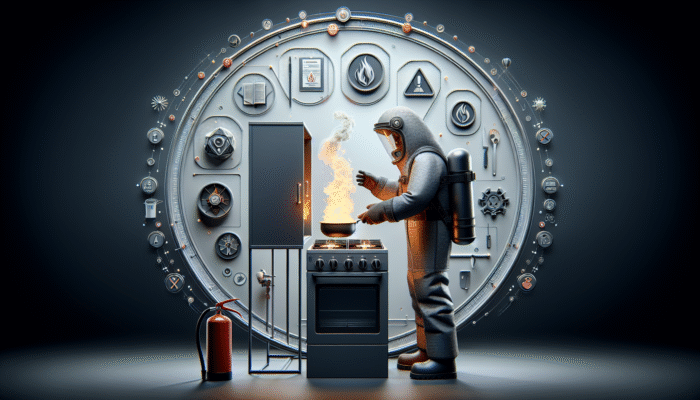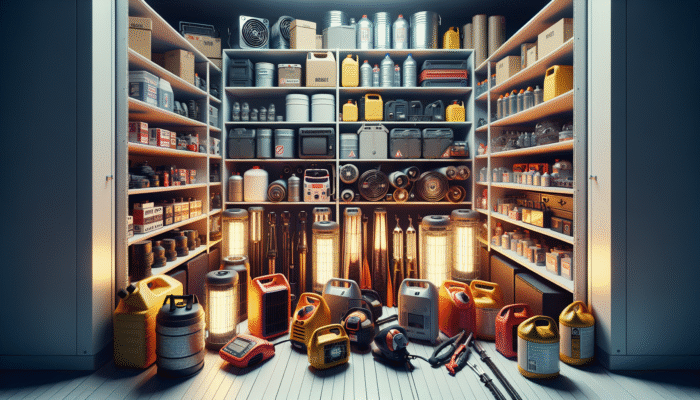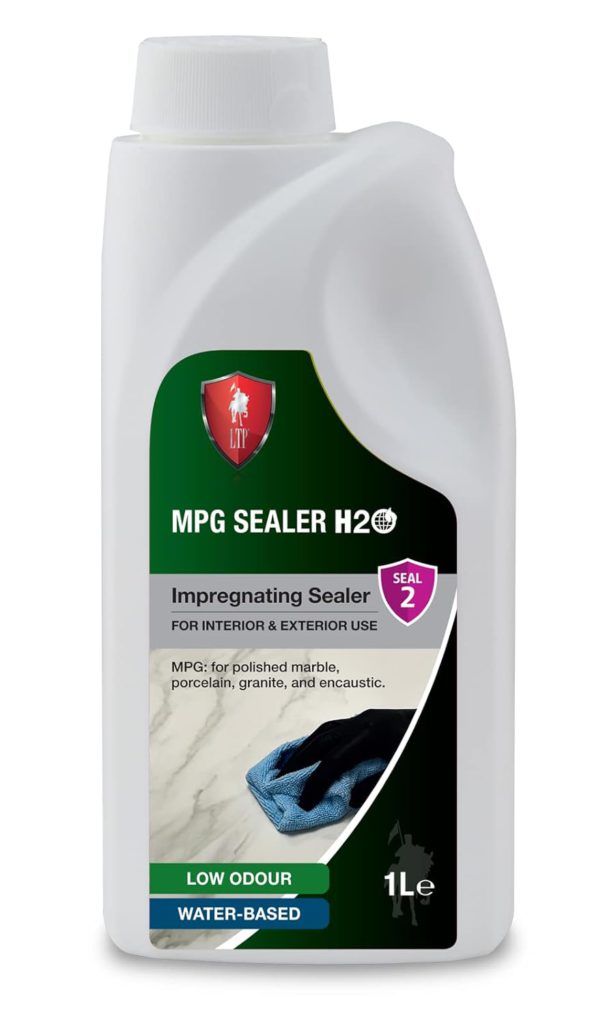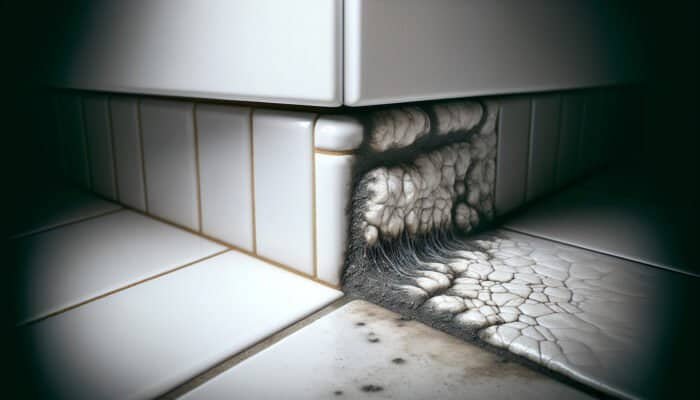Effective Emergency Heating Solutions for Unexpected Cold Weather Conditions
Utilizing Versatile Portable Heaters for Rapid Heat Access

When the weather unexpectedly turns cold, having reliable emergency heat sources can be crucial for survival. Among the most effective options are portable heaters, which are designed for flexibility and ease of use, making them appropriate for a variety of settings. Whether you’re in a cozy apartment or camping in the wilderness, these heaters provide necessary warmth exactly where it’s needed. Available in both electric and propane variations, these devices are engineered to deliver quick heating and comfort during emergencies, ensuring a livable environment even amid the harshest winter conditions.
Electric models are particularly popular in urban areas where power outages can disrupt central heating systems. Many modern portable electric heaters come with advanced safety features like overheat protection and automatic shut-off capabilities, ensuring safe operation even in confined spaces. On the other hand, propane heaters offer the distinct advantage of being completely independent of the electrical grid, making them a perfect choice for camping trips or rural areas where power outages can be frequent and prolonged. Their ability to provide heat without electricity makes them indispensable during critical emergencies.
When choosing a portable heater, it’s essential to consider both its size and heating capacity. For larger areas, select models with higher BTU (British Thermal Unit) ratings to create a comfortable atmosphere. Additionally, the portability of these heaters enables users to move them easily from room to room or even outside, promoting a versatile heating strategy that adapts to changing circumstances and needs.
With increasing awareness of climate change, the global demand for portable heaters is expected to rise. In regions that endure severe winters, where snowstorms can cause extended power outages, having a portable heater can significantly enhance your ability to remain warm and safe. These devices are also vital in emergency shelters or during community crises, underscoring their essential role in comprehensive disaster preparedness strategies.
Immediate Warmth Solutions: The Benefits of Chemical Heat Packs
Chemical heat packs provide a fast and efficient solution when instant warmth is required. These packs utilize exothermic chemical reactions to generate heat almost immediately, making them an essential tool for personal use during emergencies. Their compact and lightweight nature makes them easy to store and deploy whenever temperatures drop unexpectedly, ensuring that comfort can be restored in no time.
Chemical heat packs come in various forms, including both disposable and reusable options. Disposable packs are designed for single use, making them ideal for quick warmth during outdoor activities like hiking and skiing, or as part of a vehicle emergency kit. On the other hand, reusable packs, which can be activated by boiling or microwaving, offer a sustainable choice for those who expect to use them repeatedly, allowing for warmth without generating excessive waste.
These heat packs are particularly useful in first aid scenarios. For instance, they can be placed inside sleeping bags during chilly nights spent outdoors, providing essential warmth and comfort. Moreover, athletes and outdoor enthusiasts often rely on them to maintain body temperature in freezing conditions, demonstrating their practical applications beyond mere warmth provision.
Following proper guidelines for safety is crucial when using chemical heat packs. While generally safe, improper handling or prolonged skin contact can lead to burns. Therefore, understanding their limitations and proper usage techniques is essential to maximize benefits while minimizing risks.
Eco-Conscious Heating Solutions: Leveraging Solar Power
By harnessing the sun’s energy, solar heaters offer an environmentally friendly option for generating heat during emergencies. These systems convert sunlight into thermal energy, providing a sustainable alternative for various heating needs. Their appeal lies not only in their environmental benefits but also in their ability to operate independently of traditional energy sources, making them invaluable during crises.
Solar heaters are available in numerous configurations, including both passive and active systems. Passive solar heating relies on architectural features like windows and thermal mass to efficiently capture and hold heat. Conversely, active solar heating systems utilize solar collectors to absorb sunlight and convert it into heat, which is then distributed throughout the space, ensuring effective warmth.
These solar heaters are adaptable for diverse applications, ranging from residential homes to remote cabins. In sun-rich regions, these systems can significantly decrease reliance on fossil fuels while effectively lowering energy costs. Additionally, they can serve as a game changer during emergencies when conventional energy supplies are compromised, allowing for continued warmth and comfort.
However, the initial investment in solar heating systems can vary greatly depending on the complexity of installation and setup requirements. Nevertheless, the long-term savings and environmental advantages often outweigh the upfront costs. With ongoing technological advancements, the efficiency of solar heaters continues to improve, making them an attractive option for those looking to enhance their energy independence while contributing to environmental sustainability.
Critical Safety Protocols for Operating Heat Sources

Ensuring Proper Ventilation When Using Heat Sources
Maintaining adequate ventilation is crucial when operating any emergency heat source, especially those that combust fuel. Insufficient ventilation can lead to the accumulation of harmful gases, primarily carbon monoxide, which poses serious health risks. Carbon monoxide is both colorless and odorless, making it particularly dangerous as individuals may remain unaware of their exposure until symptoms appear.
It is essential to ensure a constant flow of fresh air when using heaters that emit combustion gases, such as propane or kerosene models. Opening windows or doors can aid in ventilation, although this may compromise the heater’s overall effectiveness. In confined spaces, utilizing exhaust fans can help expel harmful gases, fostering a safer environment and reducing health risks.
Proper ventilation is not only vital for preventing carbon monoxide buildup but also for managing humidity levels. Heating a space can increase moisture levels in the air, particularly in enclosed environments. This excess humidity can lead to mold growth and other issues, making the maintenance of airflow essential for overall health and safety.
Regularly testing carbon monoxide detectors in your home is advisable. These devices can alert you to dangerous gas levels, significantly enhancing safety while using various heat sources. In many areas, building codes mandate the installation of these detectors, underscoring their importance in comprehensive emergency preparedness strategies.
Implementing Stringent Fire Safety Protocols
Establishing rigorous fire safety measures is critical when using emergency heat sources. The risk of fire increases significantly when operating heaters, particularly those reliant on combustible fuels. Familiarizing yourself with the fire hazards associated with each heat source is vital to minimize risks and ensure a secure environment.
A fundamental rule is to maintain heaters at a safe distance from flammable materials, including curtains, furniture, and paper. A clearance of at least three feet is generally recommended to reduce the likelihood of accidental fires. Choosing heaters that come with built-in safety features, such as tip-over switches and automatic shut-off mechanisms, can further decrease potential hazards.
Another important aspect of fire safety is the routine inspection and maintenance of heaters. Dust, debris, and lint can accumulate on and around heaters, significantly increasing the risk of fire. By keeping these units clean and in good working order, users can prevent potential malfunctions that could lead to dangerous situations, thereby ensuring safety and performance.
It is highly advisable to have a fire extinguisher readily available in any area where heat sources are utilized. Knowing how to operate the extinguisher is equally crucial; failing to act swiftly in the event of a fire can lead to disastrous outcomes. Familiarizing yourself with local fire safety regulations and guidelines enhances overall preparedness during emergencies, ensuring you are equipped to handle unexpected situations effectively.
Safe Handling and Storage of Heating Devices

Proper handling and storage of emergency heat sources are essential for safety and longevity. Inadequately stored heaters or fuels can lead to potential hazards, including leaks and accidental ignition. Understanding the specific requirements for each heat source is crucial for enhancing safety and ensuring they function effectively when needed most.
Always follow the manufacturer’s guidelines for storing portable heaters. This typically involves keeping them in a dry, cool location away from direct sunlight and moisture. Fuel sources, such as propane or kerosene, should be stored in approved containers in well-ventilated areas away from living spaces and heat sources to prevent dangerous situations.
Handling these devices with care is equally important. When transporting heaters or fuel, ensure they are secured to prevent spills or damage. Additionally, avoid using damaged equipment; inspect your heat sources before each use to check for leaks, frayed cords, or other signs of wear and tear that could compromise safety.
Training family members on the correct use and handling of all heat sources is crucial. Everyone should be familiar with procedures for safe operation and emergency protocols should issues arise. By fostering a culture of safety and awareness, households can significantly diminish risks associated with emergency heat sources, ensuring all individuals are prepared in case of an emergency.
Examining Different Fuel Options for Emergency Heating Solutions
The Advantages of Propane as a Trusted Heating Fuel
Propane is one of the most commonly used fuels for emergency heat sources, and for good reason. It provides a high heat output, is easily transportable, and can be stored for extended periods without degradation. Many portable heaters are specifically designed to operate on propane, making it an accessible option for those aiming to stay warm during emergencies.
The efficiency of propane as a fuel source is remarkable. It burns cleanly, emitting minimal pollutants compared to other fossil fuels, which is a significant advantage concerning indoor air quality. Furthermore, propane tanks are designed for safe storage and transport, with regulations ensuring they can withstand pressure and prevent leaks, thereby enhancing their utility as a heating source.
In emergency situations, propane serves as a dependable option for heating homes and outdoor areas. Its availability in various tank sizes makes it adaptable to diverse heating requirements, from small portable heaters to larger whole-home systems. Additionally, many regions provide propane delivery services, enabling households to stockpile fuel in anticipation of winter or potential emergencies, ensuring they have adequate resources when most needed.
Safety is paramount when handling propane. Always store tanks upright in a cool, dry location and conduct regular leak checks. Applying a mixture of dish soap and water to connections can help identify leaks, as bubbling indicates escaping gas. Understanding propane usage and safety measures enhances the effectiveness and reliability of this fuel source during emergencies.
Reliable Heating Solutions with Kerosene
Kerosene heaters have long been trusted to provide sustained warmth during extended emergencies. This fuel is particularly effective in colder climates, where the ability to generate heat over prolonged periods is crucial. Kerosene burns efficiently, delivering a high heat output while remaining relatively affordable and easy to obtain.
One of the primary advantages of kerosene heaters is their independence from electricity, making them ideal for situations where power outages are common. These heaters can maintain warmth in homes or emergency shelters, ensuring that individuals and families remain comfortable during prolonged crises, regardless of external conditions.
However, using kerosene does involve specific safety considerations. Proper ventilation is necessary to prevent the buildup of harmful fumes, as kerosene can produce carbon monoxide. It is strongly recommended to use kerosene heaters in well-ventilated areas and keep carbon monoxide detectors on hand for added safety, ensuring that potential hazards are identified and addressed promptly.
Careful storage practices for kerosene are also essential. It should always be stored in approved fuel containers away from living spaces to ensure safety. Regularly checking for leaks and the deterioration of storage containers is crucial to prevent accidents. Understanding the intricacies of kerosene use significantly enhances its effectiveness as a reliable heating solution during emergencies.
Utilizing Wood and Biomass for Sustainable Heating
In areas with limited access to modern fuels, wood and biomass serve as traditional emergency heat sources. These renewable fuels are abundant in many regions, providing a reliable option for heating when other sources are unavailable. From wood stoves to fireplaces, the ability to sustainably source heat from natural materials is invaluable during emergencies.
Effective planning and preparation are necessary to utilize wood efficiently as a fuel source. Well-seasoned wood burns more effectively and produces less smoke, making it a more environmentally friendly choice. Not only is it effective for heating, but it can also be used for cooking, making it a versatile option in survival situations where multiple functions are needed.
Biomass, which includes agricultural residues, wood chips, and even pellets, offers an alternative heating solution that utilizes waste products. These materials can often be sourced locally, thereby reducing transportation costs and environmental impact. As technology advances, biomass heating systems become more efficient and accessible to a broader population, providing sustainable heating solutions for emergencies.
Safety considerations for wood and biomass heating should not be overlooked. Regular chimney maintenance and inspections are critical to prevent fires and ensure safe operation. Additionally, keeping flammable materials at a safe distance from fireplaces and stoves is crucial for preventing accidental fires. By understanding the benefits and risks associated with wood and biomass heating, individuals can effectively utilize these emergency sources while minimizing potential hazards.
Regular Maintenance and Care for Your Heating Solutions
The Significance of Routine Cleaning
Routine cleaning is essential to guarantee the optimal performance of emergency heat sources. Dust, debris, and soot can accumulate on heaters, negatively impacting their efficiency and posing potential safety hazards. A clean heating system not only performs better but also significantly reduces the risk of fire and carbon monoxide accumulation, enhancing safety and comfort.
Regular dusting and wiping down surfaces with a damp cloth can help maintain cleanliness for electric heaters. Filters should be checked consistently, as clogged filters can obstruct airflow and heating efficiency, leading to unnecessary energy consumption. It is advisable to adhere to the manufacturer’s instructions for cleaning and maintenance schedules to ensure the unit operates at peak performance levels.
Cleaning the burner and exhaust systems is crucial for fuel-burning heaters, such as propane or kerosene models. Soot can accumulate in the combustion chamber, affecting the heater’s efficiency and safety. Periodic cleaning helps remove this buildup, ensuring cleaner burns and prolonging the unit’s lifespan, ultimately saving on replacement costs.
In addition to physically cleaning the units, maintaining a tidy surrounding area is vital. To reduce fire risks, flammable materials should be kept at a safe distance from heaters. By prioritizing regular cleaning and maintenance, users can ensure their emergency heat sources remain safe, effective, and ready for use when required.
Conducting Routine Inspections and Timely Repairs
Regular inspections of emergency heat sources can help identify potential issues before they escalate into serious problems. Such checks are particularly vital for fuel-burning heaters, as they may develop leaks or malfunctions that could go unnoticed without thorough examination. Implementing an inspection schedule ensures that heaters are maintained in top condition and ready for use whenever necessary.
During inspections, users should look for signs of wear and tear, including frayed cords, cracks in the casing, or corrosion around fuel connections. If any issues are detected, prompt repairs are necessary to prevent accidents or inefficiencies that could jeopardize safety. Some users may consult professionals for servicing, especially for more complex systems that require technical expertise.
An annual maintenance check is advisable for more intricate heating systems like wood or biomass. Professionals can clean and inspect ducts, chimneys, and other components to ensure safe and efficient operation. This proactive approach enhances safety and extends the lifespan of heating systems, ultimately saving money in the long run by preventing costly repairs or replacements.
Keeping a log of maintenance and repairs can also be beneficial. Documenting inspections and any work performed helps track the equipment’s history, enabling users to identify patterns in repairs and anticipate future maintenance needs, thus ensuring continuous reliability.
Guidelines for Safe Storage of Heating Equipment
Proper storage of emergency heat sources is essential to ensure their functionality and safety during emergencies. Depending on the type of heater or fuel, specific guidelines must be followed to prevent deterioration and potential hazards from improper storage.
Propane tanks should always be stored upright in a cool, dry place. Keeping them out of direct sunlight and away from heat sources prevents pressure buildup and potential leaks that could create hazards. Regularly checking the tanks for rust or damage is vital for maintaining safety and functionality, ensuring they remain ready for use.
Kerosene must always be stored in approved containers specifically designed for fuel. This precaution safeguards against spills and leaks, which can pose both fire and environmental risks. It is also essential to clearly label these containers to avoid confusion, particularly when multiple types of fuels are stored, helping to prevent accidents.
Wood and biomass should be kept in a dry environment, as moisture can lead to mold and decay, compromising their effectiveness as fuel sources. Properly stacking wood allows for airflow, which aids in drying and helps prevent pest infestations. By adhering to these storage guidelines, individuals can enhance the safety and longevity of their emergency heat sources, ensuring they are ready for use when required most.
Exploring Alternative Heating Solutions
Maximizing Body Heat Retention Techniques
When conventional emergency heat sources are unavailable, employing body heat retention strategies can be a straightforward yet effective approach. The human body naturally generates heat, and with the right techniques, individuals can preserve this warmth, which is crucial during emergencies.
Layering clothing is one of the most effective methods for trapping body heat. Wearing multiple layers creates insulation, significantly reducing heat loss. Materials like wool and synthetic fibers excel at retaining heat while wicking away moisture from the skin. Even in extreme temperatures, maintaining body warmth through proper layering can make a significant difference in survival.
Blankets or sleeping bags designed for cold weather are also practical options. These materials typically consist of insulating fabrics that effectively trap heat. Creating a cocoon-like environment can enhance warmth retention, making it a vital consideration in emergency preparedness kits and strategies.
In social situations, huddling together can also optimize body heat retention. By gathering closely with others, individuals can create collective warmth that significantly increases comfort levels. This practice not only aids in maintaining warmth but also fosters a sense of community and support during challenging times, reinforcing human connections in adversity.
Building Insulated Shelters for Harsh Conditions
In the face of extreme weather, insulated shelters can provide a vital refuge as an alternative emergency heat source. These shelters are designed to minimize heat loss and create a warm, safe environment during crises. Understanding the types and benefits of insulated shelters is essential for effective emergency planning and response.
There are various types of insulated shelters, ranging from temporary tents with insulation to more permanent structures intended for harsh climates. Insulating materials, such as foam panels, reflective foil, or specialized fabrics, can dramatically reduce heat loss, offering a warm haven even in the coldest conditions. This structural integrity is essential for survival in severe weather.
Constructing an insulated shelter necessitates careful planning and specific construction techniques. Properly sealing gaps and utilizing thermal mass, such as earth or water, can significantly enhance heat retention. Moreover, ensuring that the shelter is oriented to maximize sunlight exposure throughout the day can help harness natural warmth, contributing to overall comfort.
Insulated shelters can serve as critical safe havens in remote areas during natural disasters or extreme weather events. By planning for their construction and stocking necessary supplies, individuals can remain safe, secure, and warm in adverse conditions, ultimately increasing resilience against environmental challenges.
Employing Reflective Materials for Improved Heat Retention
Using reflective materials is an innovative and budget-friendly approach to enhancing warmth during emergencies. These materials, often made of aluminum or specialized fabrics, can be applied to redirect heat back into living spaces, effectively increasing the efficiency of existing heat sources. The strategic use of reflective materials can significantly impact heat preservation during cold conditions.
A common application of reflective materials is found in emergency blankets, often referred to as reflective or space blankets. Compact and lightweight, these blankets are easy to carry in emergency kits. When wrapped around the body, they can reflect up to 90% of body heat, drastically improving warmth retention and comfort in survival situations.
Beyond personal use, reflective materials can be strategically positioned within shelters or homes to enhance heating efficiency. For instance, placing reflective panels behind radiators can redirect heat into the room instead of allowing it to dissipate through walls. This simple adjustment can improve comfort levels without increasing energy consumption, making it a highly effective strategy for managing heat.
In emergency situations, being resourceful with available materials can profoundly affect comfort and safety. By incorporating reflective materials, individuals can effectively manage heat retention, ensuring a warmer environment during critical times and enhancing survival prospects.
Proactive Measures for Emergency Preparedness
Assembling Essential Supplies for Emergencies
Preparation is vital for effectively managing emergency heat sources during a crisis. Stockpiling essential supplies allows individuals and families to remain self-sufficient and secure when confronted with unexpected cold weather or power outages. Understanding which supplies to gather is crucial for effective emergency preparedness, ensuring readiness for adverse situations.
When assembling an emergency supply kit, prioritize fuel sources that correspond with your heating systems. For instance, if you rely on propane heaters, ensure you have additional tanks stored safely. Similarly, stockpile appropriately labeled containers of kerosene for kerosene heaters. Additionally, having a reliable supply of batteries for electric heaters or safety devices is vital for maintaining functionality and ensuring your systems remain operational during outages.
Beyond fuel, consider additional items that enhance heating capabilities. Insulating materials, such as blankets, tarps, or emergency bivvy bags, can provide extra warmth when temperatures unexpectedly drop. Moreover, thermal clothing, including socks, hats, and gloves, ensures that you retain body heat while waiting for a heat source to become operational, enhancing overall preparedness.
It is essential to regularly review and update your emergency supply kit. Items can expire or become obsolete, so routine checks ensure everything remains in working order. By taking a proactive and organized approach to stockpiling supplies, families can effectively weather any emergency situation, ensuring they remain safe and warm.
Creating a Detailed Emergency Response Plan
A comprehensive emergency plan can significantly streamline the use of emergency heat sources during crises. A well-developed emergency plan prepares individuals and families to act swiftly and efficiently when confronted with unforeseen challenges, ensuring effective and timely responses.
Begin by identifying the specific emergencies you are most likely to encounter, such as winter storms, power outages, or natural disasters. Understanding these scenarios enables you to tailor your heating strategies and select appropriate emergency heat sources that will effectively meet your needs.
Once you have identified potential emergencies, outline specific actions to take. This may include designating a meeting point for family members, establishing methods of communication, and detailing how and when to deploy heating solutions. Practicing these steps through drills can improve familiarity and reduce panic during emergencies, ensuring everyone understands their roles and responsibilities.
Key contact information, including emergency services and local utility providers, should be readily accessible. This information can streamline communication and assistance during critical moments, ensuring a more effective response when it matters most.
Educating and Training on the Use of Emergency Heat Sources
Training and educating individuals on the proper use of emergency heat sources is essential for enhancing safety and effectiveness during crises. Understanding the correct operation of heating devices can prevent accidents and ensure warmth is readily available when needed, significantly improving outcomes during emergencies.
Conducting workshops or training sessions for family members or community groups can help raise awareness about the various heating options available. This education should cover essential topics, including safety protocols, maintenance, and the proper handling of fuels to ensure everyone can respond appropriately during emergencies.
Incorporating hands-on demonstrations can further enhance understanding. Showing how to set up heaters correctly, conduct safety checks, and maintain equipment reinforces the importance of preparation. By engaging with participants and allowing them to practice these skills, individuals are more likely to remember what they’ve learned and apply it effectively during an emergency.
Lastly, staying informed about local regulations and guidelines related to heating systems ensures compliance and safety. Educational resources from community organizations or fire departments can provide valuable insights and updates on best practices for using emergency heat sources effectively, fostering a culture of preparedness and safety.
Examining the Environmental Impact of Heating Solutions
Confronting Emissions and Pollution Challenges
Recognizing the environmental impact of emergency heat sources is crucial for promoting sustainable practices. Various heating options generate different levels of emissions, contributing to air pollution and climate change. By being aware of these effects, individuals can make informed decisions regarding their heating sources, ultimately reducing their environmental footprint and aligning with sustainability objectives.
Fossil fuel-based heating methods, such as propane and kerosene, release greenhouse gases during combustion, contributing to climate change. While these fuels are efficient and effective for heating, their environmental consequences warrant careful consideration. Transitioning to cleaner alternatives, such as electric or solar heating, can significantly reduce emissions and promote sustainability in emergency preparedness strategies.
Although biomass heating is renewable, it also impacts air quality. The combustion of wood and other organic materials can produce particulate matter and other pollutants. However, employing modern, efficient systems and properly seasoned wood can mitigate these adverse effects, making biomass a more viable option in the long term while contributing to a greener environment.
Ultimately, being conscious of the environmental impact of heating sources enables individuals to make choices that align with their values. By prioritizing eco-friendly options, we can collectively help reduce pollution and create a healthier planet for future generations, ensuring a sustainable future for all.
Implementing Sustainable Practices
Adopting sustainable practices when utilizing emergency heat sources is vital for minimizing environmental impact. Simple changes in the operation and maintenance of heating systems can significantly enhance sustainability and energy efficiency.
One effective way to embrace sustainability is by investing in energy-efficient heating devices. Modern heating systems often come equipped with advanced technologies that reduce energy consumption while providing the same level of warmth. This not only lowers energy costs but also decreases the greenhouse gas emissions associated with heating, contributing to overall environmental health.
Incorporating renewable energy sources like solar power into heating systems enhances sustainability. For example, solar heaters harness energy from the sun to provide heat, significantly reducing reliance on fossil fuels. Exploring hybrid systems that combine traditional heating methods with renewable energy can offer a balanced approach to energy consumption, promoting a greener future.
Energy conservation is another key aspect of sustainable heating. Simple actions, such as sealing doors and windows to prevent drafts, can reduce the energy required to maintain warmth. Thermal curtains or shades can also help retain heat, further enhancing energy efficiency and reducing the overall environmental impact of heating.
By embracing these sustainable practices and encouraging others to do the same, individuals can positively contribute to the environment while ensuring their heating needs are met during emergencies, fostering a culture of responsibility and care for our planet.
Responsible Recycling and Disposal Techniques
Understanding the proper recycling and disposal methods for emergency heat sources is essential for environmental stewardship. Many heating devices and fuels have specific requirements for safe disposal to prevent contamination and environmental damage, making responsible disposal practices crucial.
For appliances that have reached the end of their lifespan, it is essential to check local regulations regarding disposal. Some heating units may contain hazardous materials, such as oils or chemicals, that necessitate special handling to prevent environmental damage. Consulting local waste management authorities can clarify proper disposal methods and ensure compliance with regulations.
Fuel containers like propane or kerosene tanks should never be disposed of in regular trash. Many retailers offer recycling programs for used fuel containers, ensuring they are processed safely and responsibly. Proper disposal helps prevent leaks and environmental damage, reinforcing the importance of responsible practices in emergency preparedness.
For renewable fuels like biomass, consider composting or repurposing wood waste to minimize environmental impact. Utilizing a local recycling facility for appropriate materials contributes to resource conservation and sustainability. By being mindful of recycling and disposal practices, individuals can reduce their environmental footprint and promote a healthier planet for future generations.
Enhancing Energy Efficiency in Heating Solutions
Improving energy efficiency in emergency heat sources is paramount for reducing overall environmental impact. Efficient heating systems consume less energy, thereby reducing emissions and reliance on fossil fuels. By selecting energy-efficient devices and implementing effective practices, individuals can ensure they stay warm while also being environmentally conscious.
Many modern heating systems are designed with energy efficiency in mind. Look for appliances with high energy efficiency ratings, which indicate that they utilize less fuel or electricity to achieve the same heat output. Investing in these systems can lead to long-term savings on energy bills while minimizing environmental impact, making it beneficial for both users and the planet.
Alongside selecting efficient equipment, implementing effective practices can enhance energy efficiency. Regular maintenance and cleaning of heating systems ensure they operate optimally, reducing unnecessary energy consumption. Simple actions like utilizing programmable thermostats can help manage heating use, allowing for energy savings without sacrificing comfort, making these strategies effective for sustainability.
Encouraging energy-efficient practices within communities promotes a culture of sustainability. Sharing knowledge and resources about energy-efficient heating solutions can empower individuals to take action and collectively reduce their environmental impact, fostering a sense of community responsibility for environmental health.
Innovations in Heating Technologies
Significant Advancements in Efficiency
Technological innovations have transformed the landscape of emergency heat sources, leading to substantial efficiency improvements. The advancement of cutting-edge heating technologies has resulted in devices that consume less fuel while delivering superior warmth, making them more sustainable and cost-effective for users.
Modern electric heaters frequently incorporate smart technology, allowing users to control settings remotely or program schedules. This level of control enables better management of heating needs, thereby minimizing energy waste. By employing sensors and data analytics, these devices can optimize performance based on occupancy and temperature, further enhancing efficiency and comfort in various settings.
Moreover, advancements in materials have led to improved insulation and heat retention. Innovations in thermal management, such as enhanced heat exchangers and insulation materials, reduce heat loss and increase overall performance. Consequently, users can experience greater comfort without incurring high energy costs, making these advancements appealing for emergency preparedness.
These efficiency enhancements benefit individual users while contributing to broader environmental goals. By lowering energy consumption and emissions, advanced heating technologies play a vital role in addressing climate change and promoting sustainable living, ensuring a better future for all.
Incorporating Automation and Robotics in Heating Solutions
Integrating automation and robotics into emergency heat sources has revolutionized how we manage heating systems. Automation increases productivity and efficiency, allowing users to maintain consistent warmth with minimal manual intervention. This technological advancement is especially valuable during emergencies, providing reliable heating without requiring constant oversight.
Smart thermostats and automated heating controls exemplify this integration. These devices can learn user behavior and adjust settings accordingly, ensuring optimal comfort while conserving energy. In emergencies, this automation facilitates quick adjustments to heating levels without requiring users to be physically present, enhancing overall safety and convenience.
Robotics also plays a role in more complex heating systems, such as those used in large buildings or commercial settings. Automated systems can monitor temperatures, detect anomalies, and even perform routine maintenance tasks, ensuring that heating systems operate seamlessly and efficiently, particularly during critical situations when consistent warmth is essential.
The advantages of automation extend beyond convenience; they also enhance safety. For instance, automated alerts can notify users of potential malfunctions or maintenance needs, allowing for prompt action to prevent hazards. By embracing automation and robotics, individuals and organizations can ensure reliable heating in emergencies while minimizing risks, improving preparedness and response capabilities.
Utilizing Digital Communication for Enhanced Heating Management
Advancements in digital communication technologies have transformed how we access information regarding emergency heat sources. The widespread use of smartphones and the internet has made obtaining real-time data on weather conditions, emergency alerts, and heating system performance much easier. This access empowers individuals to make informed decisions about their heating needs during crises.
Mobile applications allow users to control heating systems remotely, providing flexibility in managing energy consumption. Notifications regarding maintenance needs, fuel levels, or safety alerts can be sent directly to users, ensuring they remain informed and proactive in their heating management, which is critical during emergencies.
Social media platforms and community networks also facilitate the dissemination of information about emergency preparedness and effective heating strategies. Users can share experiences, tips, and resources, fostering community collaboration during emergencies and reinforcing the idea that preparedness is a collective responsibility.
Leveraging digital communication technologies can help individuals stay connected and informed, enhancing their emergency preparedness. This connectivity facilitates better decision-making and fosters a culture of shared responsibility for safety and well-being in challenging times, ultimately contributing to community resilience.
Frequently Asked Questions about Emergency Heating Solutions
What are the most commonly utilized types of emergency heat sources?
The most prevalent emergency heat sources include portable heaters, chemical heat packs, and solar heaters. These options provide immediate warmth and are readily available in various situations, improving comfort during crises.
How can I ensure safety while using portable heaters?
To guarantee safety with portable heaters, always maintain clearances from flammable materials, use them on stable surfaces, and never leave them unattended. Additionally, ensure proper ventilation to prevent carbon monoxide buildup, which can pose serious health risks.
What advantages do solar heaters offer during emergencies?
Solar heaters harness renewable energy, reducing reliance on fossil fuels. They provide a sustainable and efficient heating option and can operate independently during power outages, making them ideal for emergencies where conventional energy sources may be disrupted.
How frequently should I clean and maintain my heating equipment?
Heating equipment should be cleaned and maintained at least once a year. More frequent checks may be necessary if the units are used extensively or in dusty environments, ensuring optimal performance and safety.
Are chemical heat packs safe to use?
Chemical heat packs are generally safe when used according to the manufacturer’s instructions. Avoid prolonged skin contact and ensure they are stored properly to prevent accidents, enhancing their effectiveness as an emergency heat source.
What precautions should I take when using fuel-burning heaters?
When utilizing fuel-burning heaters, ensure proper ventilation, keep flammable materials at a safe distance, and regularly inspect the unit for leaks. Installing carbon monoxide detectors adds another layer of safety, ensuring early detection of potential hazards.
How can I prepare for heating emergencies?
Preparing for heating emergencies involves stockpiling necessary supplies, creating a comprehensive emergency plan, and educating family members about the use and safety of heat sources, ensuring everyone knows how to respond effectively.
What sustainable practices can I adopt for using heating sources?
Sustainable practices include utilizing energy-efficient heating systems, incorporating renewable energy sources, and practicing energy conservation methods to minimize overall environmental impact, contributing positively to the planet during emergencies.
How should I dispose of old heating equipment?
Old heating equipment should be disposed of according to local regulations. Many retailers provide recycling programs for used appliances to ensure safe and responsible disposal, preventing environmental contamination and promoting sustainability.
What role does technology play in enhancing heating efficiency?
Technology enhances heating efficiency through automation, smart controls, and improved materials. These advancements reduce energy consumption while providing effective heating solutions for emergencies, making them more sustainable and user-friendly.
Explore our world on X!
The post Emergency Heat Sources: Key Survival Tips You Need appeared first on Survival Bite.
The Article Emergency Heat Sources: Essential Survival Tips to Know Was Found On https://limitsofstrategy.com





